#Lucien Guillaume
Explore tagged Tumblr posts
Text
Little Art things I'm obsessed with pt 1
Portraits of absent figures:

David Hockney - A Bigger Splash, 1967
Hockney originally visited California in 1963 and was won over by the sunlight and laid-back lifestyle, especially the luxury and ubiquity of the swimming pool. He described it as his "promised land" The splash is about freezing a moment in time, but it is also empty of human presence but implying a human. The male figure is present in some of David's other works from this time period, especially his muse and then-partner Peter Schlesinger. These paintings are about a hedonistic gay lifestyle, and the swimmers, the divers, are often the subject of voyeurism and desire. But in this painting, we just missed the diver, which makes the object of desire more private and personal. Who was the painter looking at, lusting after, etc. I like the contrast of the incredibly sharp and graphic suburban neighborhood, and the chaotic, organic splash. So again, if the divers represent this homosexual desire, we have this contrast of an orderly heterosexual world, and the queerness that joyfully disrupts it.
And then of course, with the absent figure, there is this massive sense of loss and loneliness. And so much of loneliness is about concealment, hiding in shame. This is a private space, but its also an exposed space, enhancing the loneliness. The figure is isolated, alone, invisible. Its a sadness that contrasts with the setting, the activity, and saturated lighting.
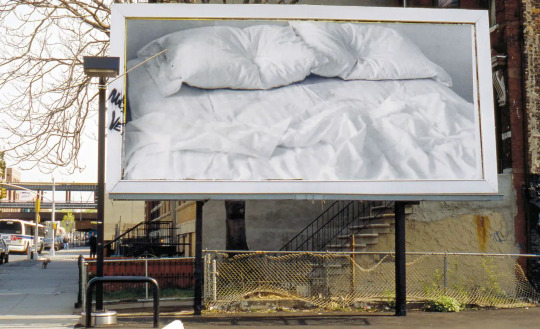
Felix Gonzalez-Torres - Untitled (billboard of an empty bed), 1991
These billboards were exhibited in the streets of Manhattan during the AIDS crisis. This piece was created the same year Felix Gonzalez-Torres's boyfriend Ross died. This portrait is a celebration of love and a memorization of loss and the emotions between intimacy and publicity. In the artist's own words:
“What I’m trying to say is that we cannot give the powers that be what they want, what they are expecting from us. Some homophobic senator is going to have a very hard time trying to explain to his constituency that my work is homoerotic or pornographic, but if I were to do a performance with HIV blood — that’s what he wants, that’s what the rags expect because they can sensationalize that, and that’s what’s disappointing. Some of the work I make is more effective because it’s more dangerous. We both make work that looks like something else but it’s not that. We’re infiltrating that look.“
The work intentionally uses the matching, identical depressions to imply a same-sex couple. The image itself is extremely intimate, but its being displayed in public spaces.
Felix Gonzales-Torres became known for his absent bodies.
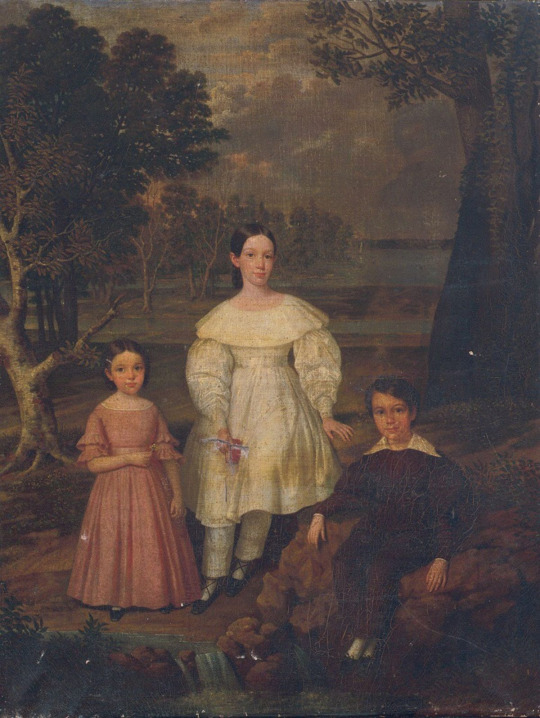
And then, a little different, this painting by Jacques Guillaume Lucien Amans (1837) commissioned by Frederick and and Coralie Frey, depicts the three Frey children, with the faint shadow of a figure. There was a legend that there was a fourth figure in this painting. In 2005 a private collector, Jeremy K Simien, purchased the painting and it underwent conservation.
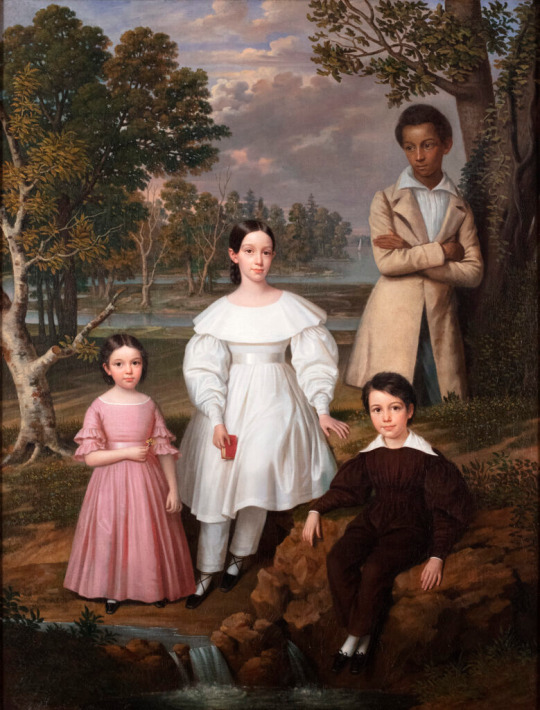
The painting revealed Bélizaire, a fifteen year-old enslaved domestic owned by the children's father. The picture captures the complex relationship between the boy and the children, the family that was keeping him captive. For one thing, the way he is set back from the others. There is this sort of intimacy between them along side the psychological trauma of forced bondage.
Here is a great Tiktok about the painting, to quote "What I'm struck by is what a sensitive portrait this is of this young man who was living in an inhumane society where he, despite being a human being, was bought and sold."
A few years after this painting was created, the three Frey children died, and Bélizaire was the only one who survived into adulthood.
The painting stayed in the Frey family. At some point, likely in the late 19th or 20th century, Bélizaire was intentionally painted over. In 1972, the great-granddaughter of Coralie Frey donated the painting to a Louisiana museum, informing them that a figure was painted over. During the course of the painting's life at the museum, no effort was put into restoring the figure.
Jeremy Simien's, who bought and restored this painting, said on his instagram "Bélizaire, they know your name now. Tell the ancestors to let me sleep for a minute."
And shout out to the picture that make me want to write this, Hyde Park Flowers, London by Tumblr user @kimironside I won't re-post it so check out the link.
#art#art history#felix gonzalez torres#belizaire#david hockney#Jacques Guillaume Lucien Amans#Jacques Amans#Jeremy K Simien#tw slavery#tw aids
1K notes
·
View notes
Text

Lucien Bonaparte contemplating his mistress, Alexandrine de Bleschamp Jouberthon by Guillaume Guillon-Lethière
#lucien bonaparte#bonaparte#art#guillaume guillon lethière#alexandrine de bleschamp jouberthon#alexandrine de bleschamp#madame jouberthon#portrait#france#french#napoleonic#neoclassical#neoclassicism#europe#european#antiquity#antique#dress#venus#roman#greek#history#incense burner#sofa#chair#busts#romantic#romanticism
118 notes
·
View notes
Text

Creole in a Red Headdress (c. 1840) by Jacques Guillaume Lucien Amans
(more info)
#Creole in a Red Headdress#Jacques Guillaume Lucien Amans#art#1840#painting#Miss Cromwell#portrait#1840s
20 notes
·
View notes
Text
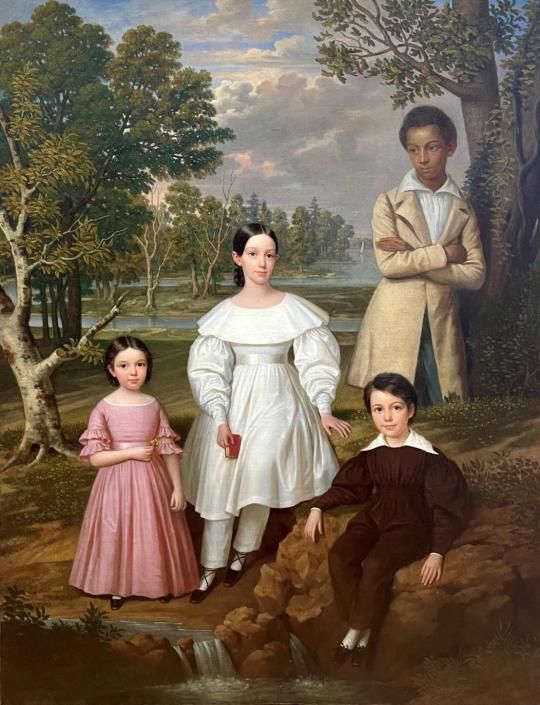
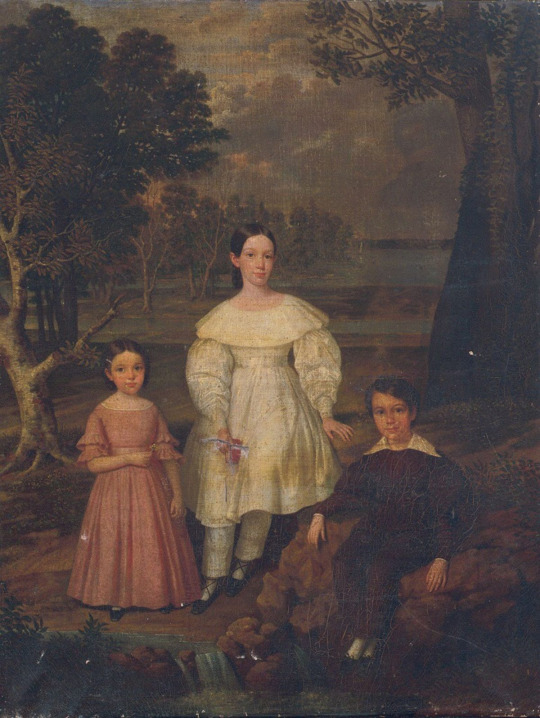
Jacques Guillaume Lucien Amans (French, 1801 - 1888), Portrait of the three Frey children, commissioned by Frederick and Coralie Frey, 1837. (Top) restored after having been painted over in the late 19th or early 20th century. The cleaning "revealed Bélizaire, a fifteen year-old enslaved domestic owned by the children's father."
@jeremy.k.simien
More on Hyperallergic
157 notes
·
View notes
Text

Jacques Guillaume Lucien Amans (French, 1801-1888) The Frey Children and Bélizaire, ca. 1840
Jacques Guillaume Lucien Amans was a French neoclassical portrait painter working in New Orleans in the 1840s and 1850s. He is famous for his New Orleans Creole portraits.
The term Creole was first used on the Gulf Coast to refer to the first generation of French or Spanish people who were born in the colonies.
In 1837 New Orleans, the Frey family lived in an elegant three-story townhouse in the French Quarter on the current site of the Carousel Bar in the Monteleone Hotel.
In this painting, a Black teenager stands beside a trio of White children. A recent historical discovery found that the young New Orleanian was an enslaved household servant named Bélizaire.
#Jacques Guillaume Lucien Amans#french art#american art#art#fine art#fine arts#1800s#classical art#european art#europe#european#oil painting#mediterranean#europa#creole#creoles#black history month#french#france#Bélizaire#new orleans#america#american
37 notes
·
View notes
Text

"Ève" par Lucien Levy-Dhurmer, 1896. ©Getty - Photo by DeAgostini/Getty Images.

Guillaume Apollinaire.
"Nous voulons explorer la bonté contrée énorme où tout se tait
Il y a aussi le temps qu'on peut chasser ou faire revenir
Pitié pour nous qui combattons toujours aux frontières
De l'illimité et de l'avenir
Pitié pour nos erreurs pitié pour nos péchés
Voici que vient l'été la saison violente
Et ma jeunesse est morte ainsi que le printemps
O Soleil c'est le temps de la raison ardente".
Guillaume Apollinaire, La jolie rousse
3 notes
·
View notes
Text



Napoleon at the signing of the Treaty of Leoben
C. 1804-1805
Guillaume Guillon-Lethière
About the artist:
According to the Dallas Museum of Art, he was one of the “first major artists of African descent in the history of European art” as he was the son of a French diplomat and an emancipated African slave. He is known for his large neoclassical paintings.
He became friends with Louis Bonaparte, and also the artistic advisor to Lucien Bonaparte, two of Napoleon’s brothers. Lucien helped Lethière get a pardon when he killed a man in a fight. Lethière obtained the coveted position of director of the Académie de France in Rome in 1807, which he held for 9 years.
His loyalty to Napoleon and the Bonaparte family caused the restored Bourbon monarchy to look unfavorably on him, but he was eventually restored to good graces in Restoration France as the years went by.
Besides Napoleon, the other members of the Bonaparte family he painted include Josephine, Lucien and Elisa.
(Source) (Source) (Source)
#Napoleon#Guillaume Guillon-Lethiere#Guillaume Guillon-Lethière#Guillon-Lethière#Lethière#napoleonic era#napoleonic#French empire#first french empire#Bonaparte#19th century#history#art history#France#frev#french revolution#lucien bonaparte#louis bonaparte#Lucien#Napoleon’s brothers#black history#art#painting#napoleonic wars#Treaty of Leoben#Leoben#Guillaume Guillon Lethière#napoleon bonaparte#Versailles
34 notes
·
View notes
Text

If George R. R. Martin ever wrote a short novel about Nettles📖
#nettles#house of the dragon#hotd#hotd spoilers#netty#nettles asoiaf#nettles f&b#asoiafedit#hotdedit#bnedit#no weapon formed against nettles shall prosper 🗡️#Jacques Guillaume Lucien Amans Creole in a Red Headdress#where is she hbo🙃#and she better be her beautiful black self ✊🏽#penguin classics
33 notes
·
View notes
Text
Film n°27 Sarah Bernhardt, la divine
Le film sur Sarah Bernhardt, incarnée par Sandrine Kiberlain, explore la vie complexe de cette actrice extraordinaire et féministe avant-gardiste. À travers des flashbacks, il retrace son parcours artistique, ses luttes personnelles, et ses idées audaci..
#Film#Guillaume Nicloux#Laurent Lafitte#Lucien Guitry#Sandrine Kiberlain#Sarah Bernhardt#Sarah Bernhardt la divine
0 notes
Text
youtube
LUNDI 30 DÉCEMBRE 2024 (Billet 1 / 4)
« SARAH BERNHARDT, LA DIVINE » (1h 38min)
Un film de Guillaume Nicloux, avec Sandrine Kiberlain, Laurent Lafitte, Amira Casar…
Critiques sur le Site AlloCiné / Presse : 3,5 / Spectateurs : 3,2
Au printemps de l’année dernière nous avions vu, lors d’une visite guidée, la très belle Exposition que le Petit Palais lui avait consacrée. Nous connaissions donc sa vie et le « colossal » succès qu’elle a rencontré tout au long de sa (longue) carrière et ce, dans divers pays, dont les Etats Unis où elle a joué, en français, sous d’immenses chapiteaux, devant des milliers et des milliers de spectateurs qui ne comprenaient pas un mot de ce qu’elle disait. C’est pour elle que Jean Cocteau a composé le mot « Monstre Sacré ».
Il aurait fallu un biopic de plus de 3 heures et d’énormes moyens pour retracer son histoire mais ce n’était pas le but de Guillaume Nicloux, le metteur en scène de ce film.
Est-ce à cause de ça, un certain nombre de spectateurs et de critiques de cinéma sont sortis déçus de la projection, sur le Net, les avis sont de fait assez partagés.
Nous vous proposons de lire la critique ci-dessous qui reflète bien par contre ce que nous, nous en avons pensé. Marina est sortie emballée et a tout de suite donné ❤️❤️❤️❤️,5 au film, JM, un petit peu moins (ayant des problèmes d’audition, certains dialogues du film où Sandrine Kiberlain jouait allongée lui ont échappé…), mais lui accorde quand même ❤️❤️❤️,5 sur 5.
Tous les deux, avons énormément apprécié les costumes, les décors, les brillantes répliques des protagonistes principaux (la plupart sont historiques)… et surtout l’interprétation de Sandrine Kiberlain. Nous parions à son sujet qu’elle aura une nomination aux prochains Césars, voire « LE » César de la meilleure interprétation féminine.
A noter que d’avoir vu l’Exposition du Petit Palais nous a permis de ne pas être frustrés…
_____________________________
Thème
Paris 1915. Atteinte d’une tuberculose osseuse qui lui « dévore » le genou droit et la menace de septicémie, Sarah Bernhardt, l’actrice française la plus connue et adulée du monde, doit se résoudre à se faire amputer. Alors âgée de 75 ans, elle parvient à en plaisanter et à rassurer les amis qui l’entourent… Bien sûr, la « Divine » s’en sort et revient vivre chez elle. Parmi ses visiteurs, le jeune Sacha Guitry. Il va la faire parler de la liaison qu’elle eut vingt ans plus tôt avec son père Lucien, à une époque où, libre, moderne, talentueuse et extravagante, elle, l’Actrice avec un A majuscule, était au faîte de sa gloire… Elle racontera à Sacha les sales coups que son père lui avait joués, la poussant par deux fois au suicide. Sarah la flamboyante avait donc aussi des fragilités…
Points forts
La singularité du projet. Même si, assez étonnamment d’ailleurs, il n’y avait encore jamais eu de « biopic » français sur celle qui fut le premier « monstre sacré » du monde et qui, encore aujourd’hui, reste une icône, il était hors de question pour Guillaume Nicloux de retracer sagement sa carrière sur grand écran. Le cinéaste a choisi de dresser un portrait psychologique de la grande Sarah, et ce, à travers deux périodes clés de sa vie : celle de l’acmé de sa carrière (l’année 1896) où elle est au firmament de tout ce qui la compose (son excentricité, sa démesure, sa liberté, sa modernité, son extravagance, son impertinence, mais aussi, soigneusement dissimulées, ses fragilités…) et celle où, pour ne pas mourir, elle doit se faire amputer d’une jambe, en jouant les bravaches. Cela suffit ? En tous cas, cela a suffi à la réinventer…
Le choix de l’interprète. Trouver une actrice capable de jouer toutes les facettes de la « Divine » sans pour autant la copier, aurait pu relever de la gageure. Dès le départ du projet, il y a cinq ans, Guillaume Nicloux n’en a vu qu’une : Sandrine Kiberlain. La comédienne a d’emblée accepté le défi. « Je ne voulais surtout pas imiter Sarah Bernhardt dit-elle. Avec Guillaume Nicloux, on s’est demandé s’il fallait rendre sa vérité en copiant son jeu et ses intonations, ou s’il fallait se l’approprier autrement. On a choisi la deuxième voie : rendre l’émotion et la puissance qu’elle procurait ». Sandrine Kiberlain ne s’est pas trompée. La Sarah Bernhardt qu’elle propose est tout simplement fascinante. Saluons au passage ce petit rire qu’elle a inventé et qui ponctue presque toutes ses répliques : il semble exprimer à la fois la folie et l’impertinence gouailleuse de la tragédienne qu’elle (ré) incarne.
La beauté des décors et des costumes. Tout chatoie dans ce film magnifiquement cadré et éclairé. On ne devine pas qu’il a été tourné en cinq petites semaines avec un budget modeste.
La richesse du générique. Il offre parmi la crème des comédiens français, dont Laurent Lafitte (formidable dans son personnage de Lucien Guitry), Pauline Etienne, Laurent Stocker, Grégoire Leprince-Ringuet…
L’énergie musicale du film, offerte par les nombreux compositeurs qui l’accompagnent (Reynaldo Hahn, Ravel, Debussy, Chopin, Schubert…)
Quelques réserves
On pourra regretter qu’on voie très peu Sarah Bernhardt dans son rôle d’actrice.
Encore un mot...
Même s’il n’est pas question à propos de ce long-métrage, visuellement très réussi, de parler de chef-d’oeuvre, au moins pourra-t-on reconnaître à son auteur Guillaume Nicloux d’avoir réussi à cerner une artiste hors norme, dans sa singularité, ses exigences, ses faiblesses et surtout sa liberté, annonciatrice des révolutions féministes du monde d’aujourd’hui. Comment, en outre, ne pas savoir gré au cinéaste d’avoir offert à Sandrine Kiberlain un rôle à la mesure de son immense talent.
(Source : « culture-tops.fr »)
2 notes
·
View notes
Text









Royal Family Triple Threats
Guillaume - Flynn, Fleur, Florence Mountbatten-Windsor - Evelyn (written by thewcllingtons), Edwina, Edwin Grimaldi - Lucien, Victor, Luciana Victoria
7 notes
·
View notes
Photo

Jacques Guillaume Lucien Amans (French , 1801 – 1888) - self portrait
10 notes
·
View notes
Text
Painting that covered up enslaved boy restored, set to hang in Met
New York Post By Alex Mitchell August 21, 2023 2:46pm Updated A 19th-century family portrait that was altered to cover an enslaved teenager has been restored to its original version. The painting, initially etched on canvas, is now set to hang in the Metropolitan Museum of Art this fall after half a century in hiding. The Jacques Guillaume Lucien Amans attributed work from 1837, titled “Bélizaire…
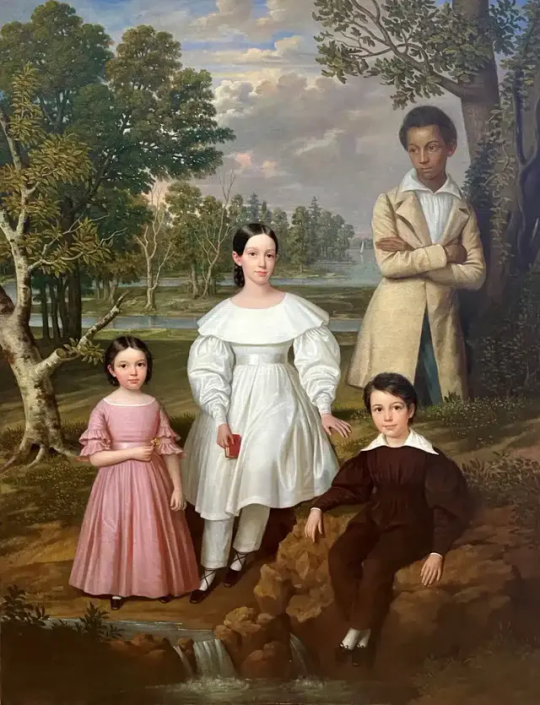
View On WordPress
2 notes
·
View notes
Text


“Lucien Bonaparte Contemplant sa Maîtresse Alexandrine de Bleschamp Jouberton (qui deviendra son épouse l'année suivante)" par Guillaume Guillon Lethière (1802) présenté à l'exposition “Guillon Lethière, Né à la Guadeloupe” du Louvre, janvier 2025.
0 notes
Text

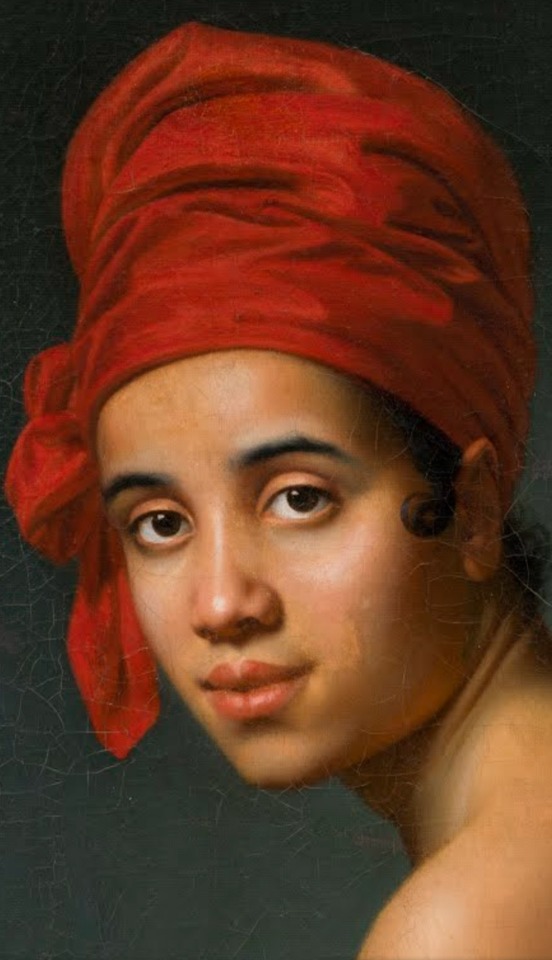
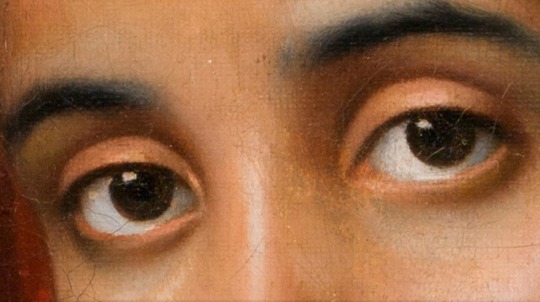

Jacques Guillaume Lucien Amans (French, 1801 - 1888), Creole in a Red Headdress, c. 1840, oil on canvas, 28¾ × 23⅝ inches; Historic New Orleans Collection.
85 notes
·
View notes
